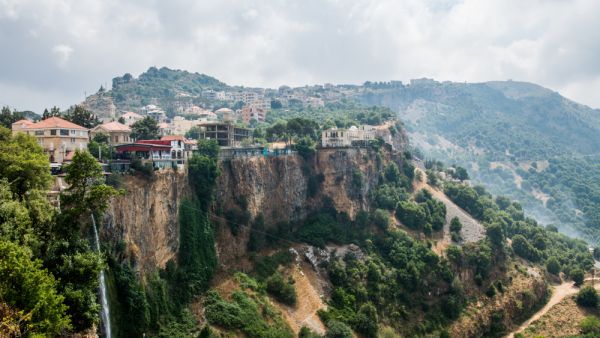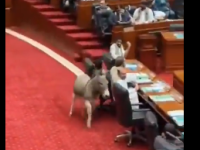The following piece is part of a new series in which we take readers through a different Lebanese city each week and explore available low-cost activities.
Our hope is three-fold: to revitalize Lebanese heritage, support local businesses, and to create financially accessible opportunities for folks. If you are a Lebanese business owner, restaurateur, creative, or simply a Lebanon enthusiast who has an affordable idea for our readers, please email [email protected]
Every Saturday morning since February, the month I began calling Lebanon home, I have dragged my whiny fiance out of bed in the hopes of exploring a new part of Lebanon.
At first, he protested. Born and bred in Lebanon, he often insists he knows all Lebanon has to offer. But it didn’t take long for him, a seasoned Lebanese shall we say, to realize that, having a drunken story in every bar in Mar Mikhael does not constitute knowing Lebanon as a whole. He was back to his old ways this week, though, adamant Jezzine was nothing but a waterfall, and definitely a waste of a Saturday. After bribing him with a hearty breakfast, he finally agrees to go, but is nowhere near convinced that it will be worth it.
The drive from Beirut takes about 90 minutes, and between the Sidon highway and the open mountain roads, there will not be a ton of places to stop, so take my advice on a hearty breakfast at home. For someone like me, who’s from the middle of the United States, featuring the flattest, most uneventful topography the country has to offer, the drive is a thrill. About three minutes after your turn off of the highway, the lush, green mountains appear, only a few scarce roads cutting through them. Drive a bit further into Roum and you’ll start to notice the beauty of the old, traditional Lebanese houses that dominate the area. Some 15 minutes later your map will tell you to drive past a church down a narrow mountain road, the likes of which are the reason I still furiously refuse to drive in Lebanon. You’ll likely question whether you’re being led to the right place, but rest assured, make the turn and you’ll soon pull into the parking lot of Karam Wines.
The beauty of Karam Wineries, much like its surroundings, is found in its natural allure. Don’t expect another Ixsir, as Karam Wineries is not a sprawling, decorated property by any means. Instead, it's a bare-bones patch of land composed of two small structures. Don’t let the no-frills appearance fool you, though: The wine is delicious and the tasting is beyond generous. At LL15,000 per person, you’ll sip on more than half a dozen choices, all of which are available for purchase after the tasting. The tasting itself only takes about half an hour, but the picnic benches set out back with a view of the entire valley will make you want to extend your time at Karam. We left feeling satisfied with our ability to support a Lebanese business business without breaking the bank. And ... a little tipsy.
Set your next location to La Maison de la Foret, a hotel situated in the forest between Jezzine and Bkassine. We didn’t stay overnight, but if you’re looking to, it’s an adventurer’s dream. The bungalows are as luxurious as they are rustic, and the hotel offers penty of activities with rates starting at LL200,000 per bungalow on the weekdays. Bikes are available for rent at LL12,000 per person per hour, which is the reason we came to La Maison in the first place. Still buzzing from Karam, we peddled downhill to the Saint Takla Church, the star of the Bkassine Valley. Built more than a hundred years ago, the architecture is breathtaking on its own, but it’s the church's pure mountain backdrop that really makes it one of the most unique in Lebanon. Perhaps it’s because the wine has worn off or perhaps it’s because we’re entirely out of shape and looking for anything to focus on but our haggard breathing, but biking back uphill we finally notice the pine forest arround us. The aesthetic is, in and of itself, uniquely gorgeous, but it’s the smell that will really capture you. It’s 3 million square meters, making it the largest pine forest in the Middle East, and truly, it’s a damn shame there’s no candle named after it.
After the bike ride, your hearty breakfast will be but a figment of your imagination. Head up to Jezzine and you’ll spot Al Chalouf right away. If you have a few extra liras to spend, do lunch here: It’s said to have the best food in the city, and you’ll eat with the best view of the Valley while listening to the sounds of the waterfall. If you want to save, skip the restaurant and make your own picnic using some local favorites. Drive through the old souk and you’ll spot Al Rayyan Cafe to your left. To your right will be a small shop called Mukhtar. If you’re lucky, Abu Rashid, the father-in-law of the shop owner, who is also the mayor of Jezzine, will be there to greet you. His personality is enough to make me a loyal customer: We buy a kilo of goat labneh only an extra reason to keep coming (if you're in the mood, the local arak is also one of the best I’ve tried). From there, head to Furn El Zahqa, where you can hand pick your own traditional zaatar bread fresh from the oven. You won’t find it on Google Maps, so you might have to ask a local to direct you (though a bit of a morbid point of reference, it might help you to know that it’s beside Arayeh Funeral Home). The spring from which the waterfall begins is a great picnic spot, and you will have spotted it on your way to Furn El Zahqa. Drive two minutes back to the spring, enjoy your picnic in the sun, and dip your feet in the crystal clear water.
Before you head back, take the time to walk through the old souk that you drove through to buy the labneh. Jezzine specializes in cutlery, and even if you have no purpose for a new knife set, you’ll marvel at all the different designs. When it’s time to head home, don’t go back the way you came. Instead, drive through the city and take the lower road into Chouf. It’s an extra half hour back to Beirut this way, but you won’t be sorry you did it. Here’s where you’ll get the best view of the waterfall. The best time to see it is technically in the spring when it's at its fullest, but when you’re looking at it, you won’t feel like you’re missing out on anything. To be fair, though, the waterfall is not the best part of Jezzine. Even my fiance, who, in typical Lebanese fashion, is never wrong, agrees.
“I told you Jezzine was worth going to,” he smirks sarcastically as we head back home.
This article has been adapted from its original source.








